Chandima Bandara Ambanwala
Department of Archaeology & Heritage Management, Rajarata University of  Sri Lanka, Mihintale.
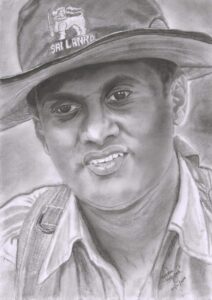
Based on the qualitative features of the Prehistoric studies in Sri Lanka, it could be divided into three distinct periods. The previous article dealt with the beginning of Prehistoric research in Sri Lanka, this article would discuss the intermediate period.
When going through the history of prehistoric research in the island, the intermediate period could be stated as starting from 1939 to 1969. The most important aspect of this period is the feature of transition in every aspect. When observing this period one could see the buildup of the theoretical features of the early period as well as the formation of a solid foundation for the modern period. The other most important aspect of this period is the emergence of local scholars in the forefront of prehistoric studies of the country unlike the early period where foreign scholars dominated the stage. This period saw systematic, organized expeditions taking place on a much larger scale than before; and also the involvement of Government institutes such as the Department of Museums in prehistoric research is a notable feature.
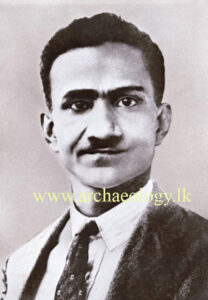
The most important personality during the period 1939 to 1963 was Dr.P.E.P Deraniyagala, Director of National Museums (Paule Edward Pieris Deraniyagala 1900-1976). The son of the illustrious historian and scholar Dr. Paul Edward Pieris, P.E.P. Deraniyagala showed excellence in many different fields. From Zoology to Anthropology to Prehistoric Archaeology, his contributions to the prehistory of Sri Lanka are immense. One could read the article on the eJournal “Dinithi-Sri Lanka Archaeology†by the archaeology.lk team on P.E.P. Deraniyagala written by Kalum Manamendra-arachchi (another great scholar of this century) on his life and scholarly work. When going through the publications of Dr. Deraniyagala it is evident that his quantitative and qualitative research on the prehistory of Sri Lanka goes to a broad extent. Amoung his many scholarly literatures is The Pleistocene of Ceylon published by the National Museum in 1958 which was taken from his PhD thesis from the Harvard University of USA. The entire contributions of Dr. Deraniyagala to the history of Sri Lanka could never be presented in an article like this, but only a summary of his works to the novice reader.
He firstly began excavations of the Thudawe Galge in the Sinharaja forest and throughout the 1940s conducted excavations in sites such as Udupiyangalge, Bambaragala, Lunugala, Kukulegama, Lenama, Madolgalge, Yakgirilena with finds from stone tools to animal and plant fossils. After this he focused his attention to the Sri Pada Reserve and for the first time excavated the caves of Batadomba Lena of Kuruwita and Batathota Lena; from Batadomba Lena he uncovered stone tools and animal bones. In 1945 his attention was drawn to the Neravana Galge of Kukulegama and also of the Manda Galge in the Monaragala District.
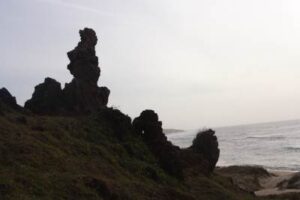
He also conducted excavations in the Ravana Ella cave north of Bandarawela where he uncovered stone and bone tools with the most interesting find being that of the remains of a human skull. During his excavation of the Kalukoladeniya cave in Kegalle they discovered for the first time a stone tool like that of an Ax blade. This proved to be good evidence of a Neolithic implement and was subjected to study by scholars. In Bulathwatta north of Palmadulla he discovered stone implements related to the Balangoda culture. More excavations were carried out at Kabaragalge cave in Rathnapura, Alugalge in Thelula and Boradiyawala in Wilpathu.
The excavations carried out between 1956 to 1961 in Bellanbandipalassa near the Walawe River in Ambilipitiya has gone down in the pages of Sri Lankan Archaeology as one of the most important excavations. This excavation revealed 12 human skeletons, providing a good indication on the physical nature of the Prehistoric Man, hence could be said as one of the most remarkable discoveries in prehistoric archaeology in Sri Lanka. A certain amount of information on this could be found in his book The Pleistocene of Ceylon. Dr. Deraniyagala was the first to show that the Prehistoric Man had similar features of the Homo sapiens or the modern Man. Dr. P. E. P. Deraniyagala was the first to scientifically classify this humanoid as Homo sapiens balangodensis deraniyagala or the Balangoda Man. Hence Dr. P. E. P. Deraniyagala is known as the ‘Father of the Prehistoric Mesolithic Man of Sri Lanka’(although the prehistoric man is known as the Balangoda Man, he was not confined to that area only but lived in every part of the island. It is a custom in archaeology to name a first-of-its-kind find from the locality from where it was found. For example the Acheulean hand axe was first discovered in Sain-Acheul and therefore wherever in the world this is found, it is known was the Acheulean axe).
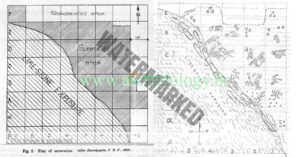
After this Dr. Deraniyagala conducted expeditions to the Isthripura cave south east of Kandy and Ottappuwe in Wilpathu and uncovered stone implements belonging to the prehistoric age. He further investigated the Herassagala cave in Rathnapura, Budugal Lena and Dikkgal Lena. Manela Galge of Gewaragiriya in Sabaragamuwa and Kithugala Beli Lena in Kegalle too were subjected to investigations. In the Rakwana Buthkanda, Iththakanda, and Buluthota caves through a surface investigation, Quartz and Chert stone tools were found. Through excavations in the area of Hungama in southern Sri Lanka Mesolithic tools were found. This area was once again subjected to systematic excavation recently in 2005 by Dr. Nimal Perera yielding important finds.
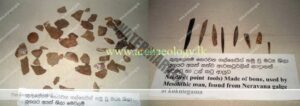
Dr. Deraniyagala conducted research on the Veddas of Sri Lanka as well. By studying these primitive people it was possible to get an idea on the culture of the Prehistoric Man. He also focused his attention and investigation on the primitive cave paintings.
During the Ice ages between 10,000 – 1,800,000 years ago the alluvial deposits of Rathnapura belonging to the Pleistocene epoch were extensively studied by Dr. Deraniyagala revealing facts on the environment during that period. These Alluvial deposits could be divided into 3 periods, 1) the Rathnapura period, 2) the Palugahathure period (a dry marshy period), and 3) the Colombo period (a climatic condition similar to the present). Likewise Dr. Deraniyagala focused his attention on the early geological periods of the island and conducted deep studies into them. These studies later aided in the understanding of the habitat and environment of the prehistoric man.
Much data on the Pleistocene epoch on Sri Lanka was taken from his investigations of the gem mines of Rathnapura. Some of his exceptional researches were on the extinct prehistoric animals of the Pleistocene epoch through fossils from the alluvial gem pits which sheds light on the many extinct species of animals and also species that are still living. His book The Pleistocene of Ceylon is an outstanding work in this regard with information on now extinct species such as Turtles, Elephants, Lion, and Hippopotamus. Apart from these he has shed light on two extinct humanoid species as well.
He has compared the animal fossils found from the Alluvial deposits of Pallmadulla in Rathnapura to those found in India from the Narmada river middle and upper Pleistocene deposits and the Swahilik region in Panjab and have shown similarities between the species. This shows that there has been a movement of animal species between Sri Lanka and India when they were once connected. He has pointed out that the alluvial deposits having been re-deposited have caused problems in dating the findings. The artifacts found from the gem mines of Rathnapura were first classified as the ‘Rathnapura Culture’ but later changed to the ‘Rathnapura Industry’ because to be classified as a culture there needs to be many factors whereas only technological artifacts were recovered from the mines hence them been classified as Industry.
The Acheulean hand axe culture which is found throughout the world is interestingly absent from Sri Lanka, several reasons for this have been put forward such as Sri Lanka being separated from the mainland and the none availability of Quartzite stone in the island which was used to construct these stone tools.
The stone age is divided into three ages with the Neolithic being the youngest of the three; it is so differentiated from the two preceding older periods due to the special features in the stone tools and cultural developments of the prehistoric man. It is still not accepted by scholars that a Neolithic period existed in Sri Lanka but decades before Dr. Deraniyagala had shown evidence that this Neolithic period existed.
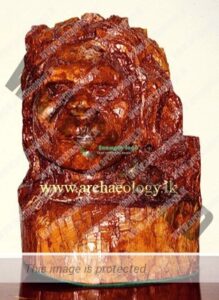
The research done on this period by Dr. Deraniyagala could not be found on a proper paradigm and thus is considered a weakness in his research. But the knowledge he has created in prehistoric archaeology and various paths he opened up has proved invaluable to the modern scholar. Another important contribution of Dr. P. E. P. Deraniyagala was that he brought in another legendary expert on prehistory of not only Sri Lanka but in the region as well, that is his son Dr. Siran Upendra Deraniyagala.
Even during the intermediate period the Noon brothers contributed their share of knowledge and also in 1950 Bridget Allchin had conducted a study on the stone tools of Sri Lanka. S. P. F. Senaratha of the National Museum in 1969 published a small book titled Prehistoric Archaeology of Ceylon on the prehistory of Sri Lanka and at a time where the study of prehistory is not well known, his efforts must be appreciated.
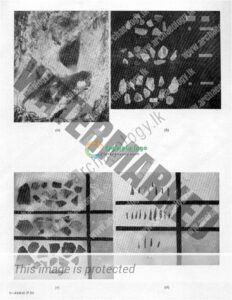
S. Gunerathna, Curator in Geology and Prehistory of the Department of National Museums in collaboration with the Department of Archaeology excavated the inner cave of the Beli Lena at Avissawella and found evidence of Mesolithic period tools and animal remains. A detailed report of this excavation written by H. D. H. De Silva is to be found in the official publication of the Museum Spolia Zeylanica (1971) titled ‘Beli-Lena Athula – Another Stone Age habitation in Ceylon’. Thus we could see contribution of the National Museum in the exploration of the Prehistory of Sri Lanka.
Dr. Siran Deraniyagala comes in to scholarly sphere at the end of the Intermediate period of Prehistoric exploration thus we would be discussing his contributions under the modern period of prehistoric study.
Through the above discussion we could get an overall understanding of the intermediate period of prehistoric study in Sri Lanka. The special features of this period as stated in the beginning was the taking over of the study of prehistory by the local scholars from the foreigners, the conducting of expeditions throughout the entire island and also conducting studies in relation to geology, zoology and anthropology.


